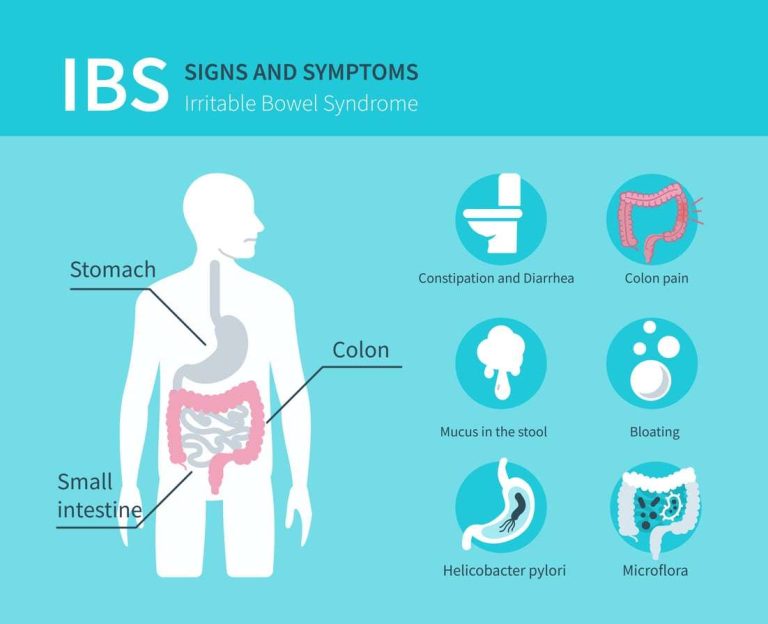Feeding Babies the Orthodox Way
FEEDING BABIES!
Couples planning to have children should eat liberally of organic liver and other organ meats, fish eggs and other seafood, eggs and the best quality butter, cream and fermented milk products they can obtain for at least six months before conception. A daily cod liver oil supplement is also advised. Organic meats, vegetables, grains and legumes should round out the diet, with a special emphasis on the leafy green vegetables rich in folic acid, which is necessary for the prevention of birth defects like spinal bifida.A good rule for pregnant women is liver once a week, at least two eggs per day and 1 teaspoon cod liver oil daily. A daily ration of superfoods, such as evening primrose oil, bee pollen, mineral powder, wheat germ oil and acerola, will provide optimal amounts of nutrients for your unborn child. Beet kvass and kombucha tea, with their liver cleansing properties, are useful in preventing future morning sickness – as are foods rich in vitamin B6, such as raw fish and raw meat.
A cleansing fast, undertaken six months or more before conception, is a good idea; but during the six months before conception and nine months of pregnancy it is vital to consume nutrient-dense foods. Every attempt should be made to enhance the digestibility of the diet through meat broths and the inclusion of lacto-fermented grains, beverages and condiments. All empty calories and harmful substances should be eliminated-sugar, white flour, hydrogenated and rancid vegetable oils, excess of polyunsaturated oils, tobacco, caffeine and alcohol. Oral contraceptives should be avoided during this preparatory period as these deplete many nutrients, particularly zinc, the “intelligence mineral.”
The importance of breast-feeding your baby, especially during their first few months, cannot be overemphasized. Breast milk is perfectly designed for your baby’s physical and mental development. Breast-fed babies tend to be more robust, more intelligent and freer from allergies and other complaints, especially intestinal difficulties, than those on formula. In addition, colostrum produced by the mammary glands during the first few days of a baby’s life helps guard him against colds, flu, polio, staph infections and viruses.
It must be emphasized, however, that the quality of mother’s milk depends greatly on her diet. Sufficient animal products will ensure proper amounts of vitamin B12, A and D as well as all-important minerals like zinc in her milk. Lactating women should continue with a diet that emphasizes liver, eggs and cod liver oil. Whole milk products and stock made from bones will ensure that her baby receives adequate calcium.
Pesticides and other toxins will be present in mother’s milk if they are present in the diet, so all care should be taken to consume organic foods of both plant and animal origin during pregnancy and lactation. Organic foods also provide more omega-3 fatty acids needed for baby’s optimal development. Hydrogenated fats should be strictly avoided as these result in reduced fat content in mother’s milk. Trans fats accumulate in mother’s milk and can lead to decreased visual acuity and learning difficulties in the infant.
Breast-feeding should ideally be continued for six months to a year. If mother’s milk is not adequate or of good quality, or if the mother is unable to breast feed for whatever reason, a homemade baby formula, rather than a commercial formula, can be used. Commercial infant formulas are highly fabricated concoctions composed of milk or soy powders produced by high-temperature processes that overdenature proteins and add many carcinogens.
Milk-based formulas often cause allergies while soy-based formulas contain mineral-blocking phytic acid, growth inhibitors and plant forms of estrogen compounds that can have adverse effects on the hormonal development in the infant. Soy-based formulas are also devoid of cholesterol, needed for the development of the brain and nervous system.Fortunately, it is possible to compose a formula that closely resembles mother’s milk. Whenever possible this formula should be based on raw organic milk, from cows certified free of tuberculosis and brucellosis. The milk should come from cows that eat food appropriate to cows, which is green grass in the warm months and hay and root vegetables in the winter, not soy or cottonseed meal.
Ideally, the milk should come from Jersey or Guernsey cows, rather than Holsteins, so that it has a high butterfat content. This may be purchased at the farm in some states. Of course, such milk should be produced under the cleanest possible conditions and stored in sterilized containers. But the milk should be unheated.Properly produced raw milk does not pose a danger to your baby, in spite of what numerous public health propagandists may assert. Raw milk contains enzymes and antibodies that make it less susceptible to bacterial contamination than pasteurized milk, while many toxins that cause diarrhea and other ailments survive the pasteurization process. Your nose will tell you if raw milk is contaminated or spoiled – but pasteurized milk may be seriously contaminated with no telltale warning odor.
Raw milk is easier for your baby to digest than pasteurized and less likely to cause cramps, constipation and allergies. If it is not possible for you to obtain certified raw milk, begin with the best quality pasteurized whole milk you can find, milk that is not homogenized, and culture it for 12 hours with piima culture or kefir grains to restore enzymes lost through pasteurization. Or, you may prepare a milk-free formula made from organic liver. Organic liver should also be added to formula made from goat milk, as goat milk is deficient in iron, folic acid and vitamin B12.
Both our milk-based and meat-based formulas have been designed to provide maximum possible correspondence with the various components of human milk. Our milk-based formula takes account of the fact that human milk is richer in whey, lactose, vitamin C, niacin, manganese and long-chain polyunsaturated fatty acids compared to cows milk but leaner in casein (milk protein). The addition of gelatin to cow’s milk formula will make it more digestible for the infant. The liver-based formula also mimics the nutrient profile of mother’s milk. Use only truly expeller-expressed oils in the formula recipes, otherwise they may lack vitamin E.
A wise supplement for all babies – whether breast fed or bottle fed-is an egg yolk per day, beginning at four months. Egg yolk supplies cholesterol needed for mental development as well as important sulphur-containing amino acids. Egg yolks from pasture-fed hens or hens raised on flax meal, fish meal or insects are also rich in the omega-3 long-chain fatty acids found in mother’s milk but which may be lacking in cow’s milk. These fatty acids are essential for the development of the brain.
Parents who institute the practice of feeding egg yolk to baby will be rewarded with children who speak and take directions at an early age. The white, which contains difficult-to-digest proteins, should not be given before the age of one year. Small amounts of grated, raw organic liver may be added occasionally to the egg yolk after six months. This imitates the practice of African mothers who chew liver before giving it to their infants as their first food. Liver is rich in iron, the one mineral that tends to be low in mother’s milk possibly because iron competes with zinc for absorption.An unfortunate practice in industrial societies is the feeding of cereal grains to infants. Babies produce only small amounts of amylase, needed for the digestion of grains, and are not fully equipped to handle cereals, especially wheat, before the age of one year. (Some experts prohibit all grains before the age of two.) Baby’s small intestine mostly produces one enzyme for carbohydrates – lactase, for the digestion of lactose. (Raw milk also contains lactase.) Many doctors have warned that feeding cereal grains too early can lead to grain allergies later on. Baby’s earliest solid foods should be animal foods as his digestive system, although immature, is better equipped to supply enzymes for digestion of fats and proteins rather than carbohydrates.
Carbohydrate in the form of fresh, mashed banana can be added after the age of six months as bananas are rich in amylase enzymes and, thus, are easily digested by most infants. Some preindustrial societies give a gruel of cereal grains, soaked 24 hours, to babies one year or older. Soaking in an acidic medium neutralizes phytates and begins the breakdown of carbohydrates, thus allowing children to obtain optimum nourishment from grains. It also provides lactic acid to the intestinal tract to facilitate mineral uptake.
At the age of about ten months, meats, fruits and vegetables may be introduced, one at a time so that any adverse reactions may be observed. Carbohydrate foods, such as potatoes, carrots, turnips, etc., should be mashed with butter. (Don’t overdo on the orange vegetables as baby’s immature liver may have difficulty converting carotenoids to vitamin A. If your baby’s skin develops a yellowish color, a sign that he is not making the conversion, discontinue orange vegetables for a time.) Lacto-fermented taro or other roots make an excellent carbohydrate food for babies. It is wise to feed babies a little buttermilk or yoghurt from time to time to familiarize them with the sour taste.
Above all, do not deprive your baby of animal fats – they needs them for optimum physical growth and mental development. Mother’s milk contains over 50% of its calories as fat, much of it saturated fat, and children need these kinds of fats throughout their growing years.
It is unwise to give baby fruit juices, especially apple juice, which provide only simple carbohydrates and will often spoil an infant’s appetite for more nutritious foods. Sorbitol, a sugar-alcohol in apple juice, is difficult to digest. Studies have linked failure to thrive in children with diets high in apple juice. High -fructose foods are especially dangerous for growing children.
Remember that babies should be chubby and children should be sturdy and strong, not slim. Babies need body fat to achieve optimum growth. The fat around their ankles, knees, elbows and wrists is growth fat that ensures adequate nourishment to the growth plates at the ends of the bones. Fat babies grow up into sturdy, well-formed adults, neither too tall nor too short and either slender or stocky depending on genetic heritage.
Keep your baby away from processed junk foods as long as possible – but do not think that you can do this indefinitely. Unless you lock your child in a closet – or live in a closed community of like-minded parents – they will come in contact with junk foods sooner or later. The baby’s best protection is the optimal diet that you have given him during his infancy and your loving example and training in later years.
One of the excellent books that I have used extensively to prepare this lecture which I highly recommend every household to own is entitled “Nourishing Traditions: A Cookbook That Challenges Politically Correct Nutrition and the Diet Dictorates by Sally Fallon and Mary Enig. You can order it direct from amazon.com and it is available in Kindle form too.
The Food and Drug Administration have not evaluated these statements. This information and products are not intended to diagnose, treat, cure or prevent any disease. For all serious health problems, consult a qualified health professional.
Read other interesting articles such as:










